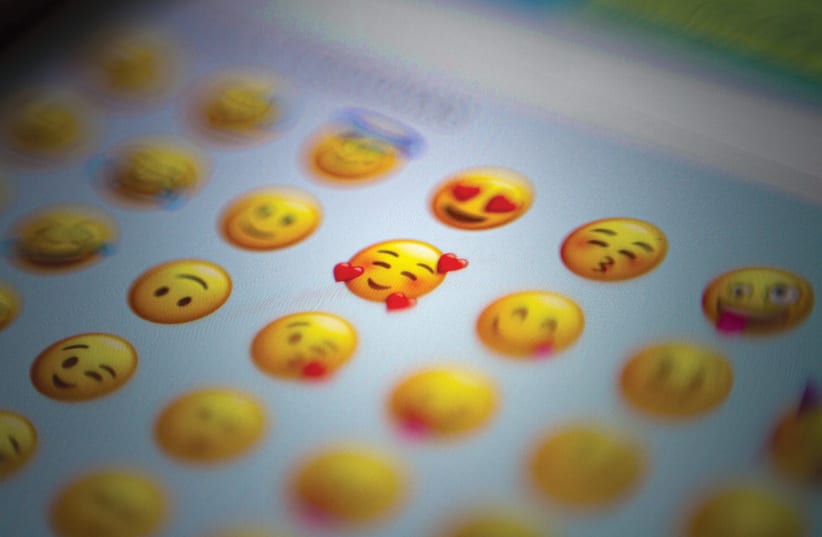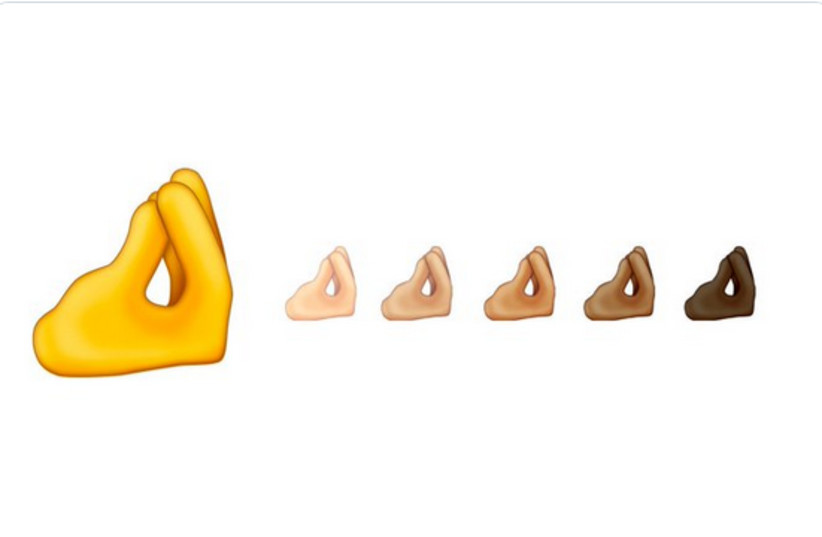I well and truly put my foot (or more accurately, my words) in the hole I dug myself!
Without considering the consequences (for why would I expect any from what I thought to be a relatively innocuous comment tucked away in the small print of a footnote to a piece I wrote about aliyah which appeared last year in The Jerusalem Post), I happened to say I dislike emojis, those small images invented in the late 1990s, their coined name meaning “a picture and a character” in Japanese.
Well, a grumble of veiled mutterings and clearer expressions of discontent descended on me like a cold afternoon downpour after a day of morning sun. And as messages started to ping on my phone, my discomfort grew with the realization that some WhatsApp friends and acquaintances who like to include a cheery smiley, colorful flower or other little image or two (or many more!) to brighten their text were taking this rather personally.
I had visions of incoming messages suddenly drying up, of being abandoned by good people who mistakenly thought their embellished missives weren’t welcome. They are!
I have never used emojis
But I have never ever used an emoji – not even the unarguably to-the-point thumbs-up or two hands placed firmly together in prayer or respectful greeting – in the fervent, and some might argue snobbishly purist or outdated, belief that words are the most accurate and nuanced, richest and deepest communicators. Choosing the right words is a treasured art acquired over a lifetime; their careful consideration to convey exact intended meanings a far from simple exercise demanding analysis, comparison and weighing up of alternatives, and fierce honesty to say and write what we really mean.
I can hear the exclamations of those who, with some justification, say that literary excellence is not the standard for everyday articulation in the shorthand forms of the digital age. Surely, the several billion emoji messages sent around the world every day are proof that they are integral to modern dialogue and are here to stay, even while the jury may be out on whether they bring people together and aid expression or dull our verbal skills and even contribute to illiteracy.
But lovers of language, especially the older ones among us, can have a hard time with emojis, a collection grown over some 20 years to more than 3,500 images. Emojipedia, the emoji reference site founded in 2013, has more than 100 facial characters alone, and even with a magnifying glass I’d find it difficult to tell a thinking face from a shushing one, a smirking face from a relieved one, a slightly frowning face from a worried one.
It’s a bit like playing the Spot-the-Difference game which involves comparing two almost identical pictures to look for not so evident variations between them. And when using an emoji, does the sender simply, without great thought or discernment, tap one of the many in the array which appears or carefully select the one which accurately reflects an intended import?
THE MEANING of an emoji can be uncertain and ambiguous. For example, does a confounded face with scrunched X-shaped eyes and crumpled nose mean frustration, irritation, disgust, sadness…? Inevitably, such questions of meaning have also entered the purview of courts of law, where over recent years with increasing if yet only moderate frequency, judges have interpreted or made inferences from emojis used in communication between parties.
For example, the Tel Aviv small claims court in 2017 ordered a couple to pay compensation to a landlord after they declined to rent the lessor’s apartment, even though the couple’s initial digital message to the landlord contained a run of emojis, including a champagne bottle, which the court found had conveyed optimism about the rental and misled the landlord.
Where I totally lose comprehension is on receipt of a string of emojis. While to some it may seem cute and fun, for me it is just an impenetrable forest of possibly connected or equally likely disparate images which I don’t even begin to try to decipher, and I suspect at least some elements find their place in the string arbitrarily.
That possibility rubs against the very essence of speech and writing, where every utterance has significance, where we should pause to consider whether to say “work” or “toil”; “walk” or “trudge”; “disturb” or “dismay”; “like” or “love.” I like how American poet Emily Dickinson put it: “I know nothing in the world that has as much power as a word. Sometimes I write one, and I look at it until it begins to shine.”
“I know nothing in the world that has as much power as a word. Sometimes I write one, and I look at it until it begins to shine.”
Emily Dickinson
So I was somewhat taken aback to discover that the esteemed Oxford Dictionary selected as its Word of the Year in 2015 an emoji! Its choice was the little circle face with tears of joy; perhaps in recognition of its widespread popularity, then and continuing as the most frequently used emoji in the decade 2011-2021. But a word it is not, with no disrespect to the distinguished Oxford Languages team.
Who knew that the image of the cupped fingers pinched together upwards, a clear symbol in Israel of “hold on, relax,” in Italy tends to show disagreement, as in “What are you saying?” In addition to culture being a factor, emojis may display differently across digital platforms and devices. For example, a finger pointing right may become flipped to point left; and if appearing between two other emojis, suddenly a consequence can turn into a cause and starkly change the intended meaning.
Context can play a crucial part, and mindfulness in the use of emojis is always a good thing. For example, a teacher acquaintance considered the ubiquitous heart to be inappropriately added to communication received by staff from her school principal, nor did she consider it acceptable usage by teachers to students.
So even while my choice may be loyalty to words while welcoming receipt of messages with or without emojis, soon after I put my foot in that self-dug proverbial hole, I realized with considerable chagrin and dismay that I had got it wrong. Rather than emojis, it’s actually digital stickers I dislike, with a vehemence that is appeased by one motion only: Delete! ❖
The writer was a lawyer in Melbourne, Australia, before she and her husband, Joe, made aliyah in 2015 to join their children in Israel. She loves words and dislikes digital stickers.

